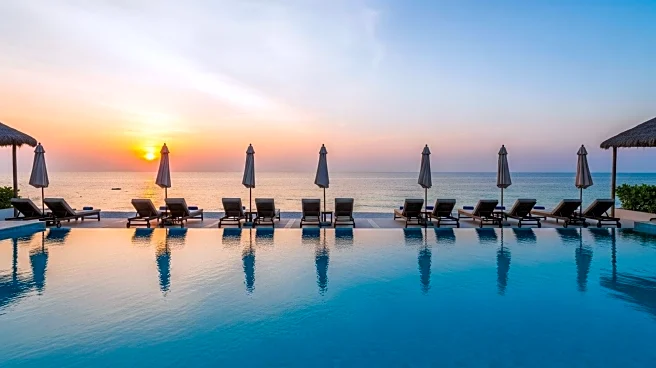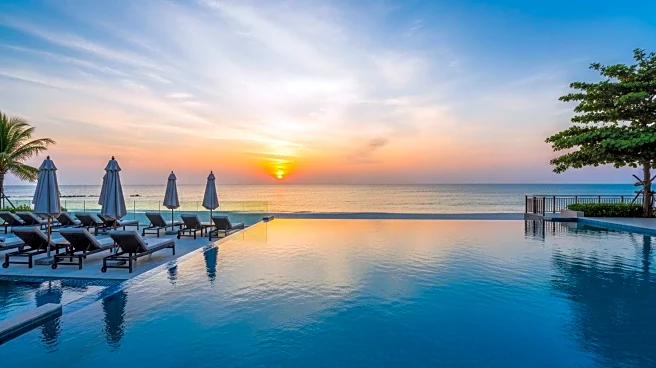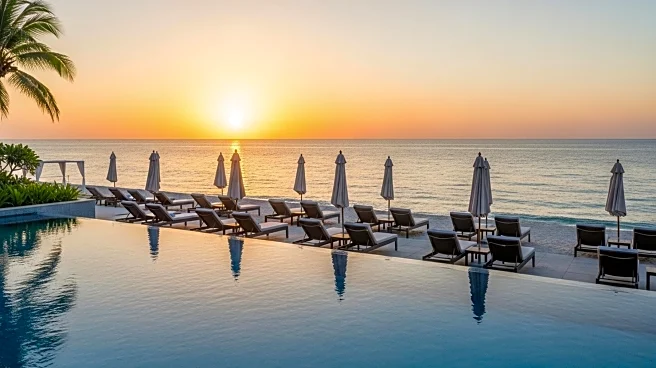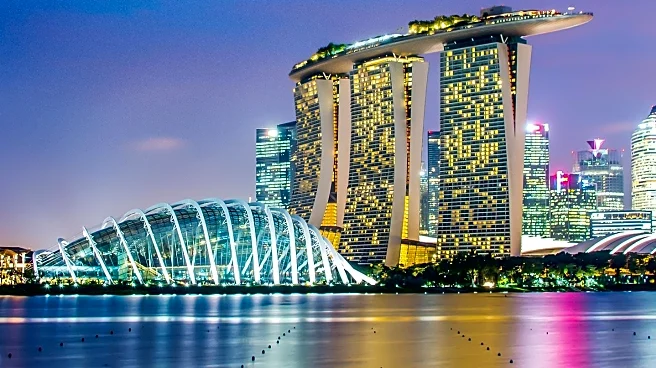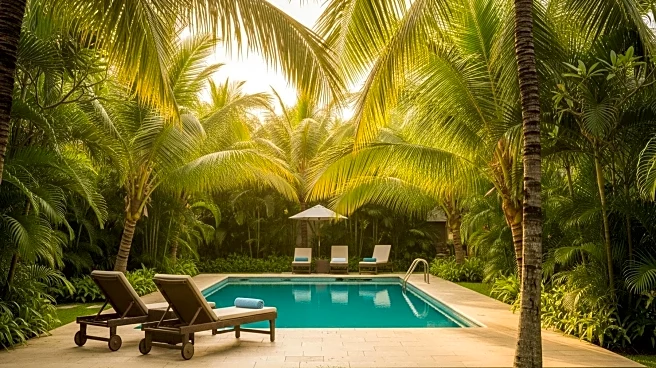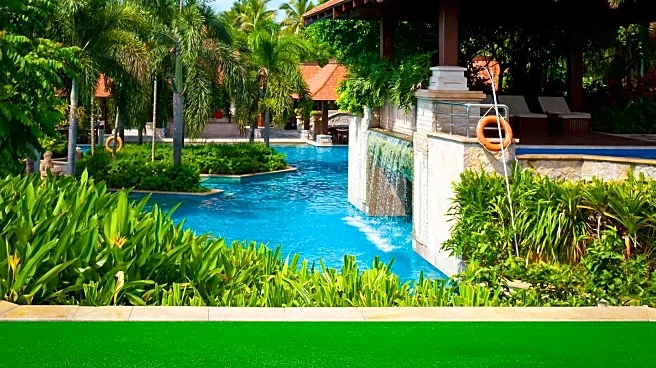What is the story about?
What's Happening?
JW Marriott has announced the opening of its new resort, the JW Marriott Cam Ranh Bay Resort & Spa, located on Bai Dai Beach in Cam Ranh Bay, Vietnam. This marks the brand's debut on Vietnam's central coast. The resort spans 22 hectares and features 203 guest rooms and private villas, including 27 one- to four-bedroom villas, ten of which are beachfront. Each villa is equipped with a private infinity pool and outdoor terrace. The resort's design is inspired by Asian elements and incorporates over 1,000 species of indigenous flora. Dining options include several restaurants and bars, such as Clay Craft, Seafood Grill, Bayside Bistro, and Ocean Bar. The resort also offers a variety of amenities, including two main swimming pools, children's pools, a Lazy River, and a fitness center. The Spa by JW features eight treatment rooms and a vitality pool.
Why It's Important?
The opening of the JW Marriott Cam Ranh Bay Resort & Spa signifies a strategic expansion for Marriott International in the Asia-Pacific region, particularly in Vietnam, which is becoming an increasingly popular tourist destination. This development is likely to boost local tourism and economy by attracting international visitors, thereby creating job opportunities and stimulating local businesses. The resort's focus on incorporating local culture and traditions, such as pottery classes at The Pottery Club, highlights a commitment to cultural preservation and sustainable tourism. This move could set a precedent for other international hotel chains looking to expand in emerging markets by integrating local elements into their offerings.
What's Next?
As the resort begins operations, it is expected to attract a significant number of tourists, contributing to the growth of Vietnam's tourism sector. The success of this resort could encourage JW Marriott to further expand its presence in Vietnam and other parts of Southeast Asia. Additionally, the resort's emphasis on sustainability and local culture may influence future developments in the hospitality industry, promoting more environmentally and culturally conscious tourism practices.
AI Generated Content
Do you find this article useful?
